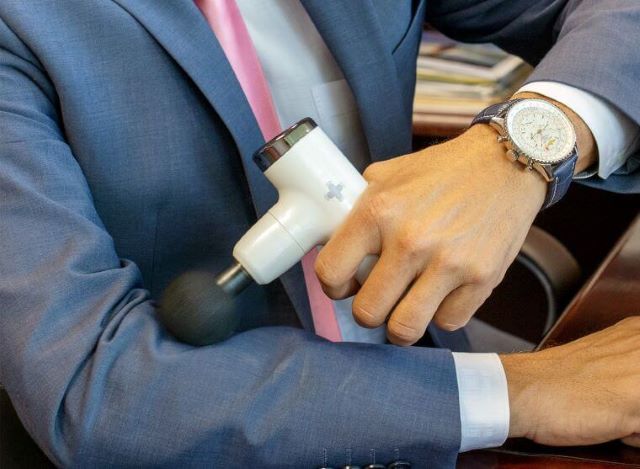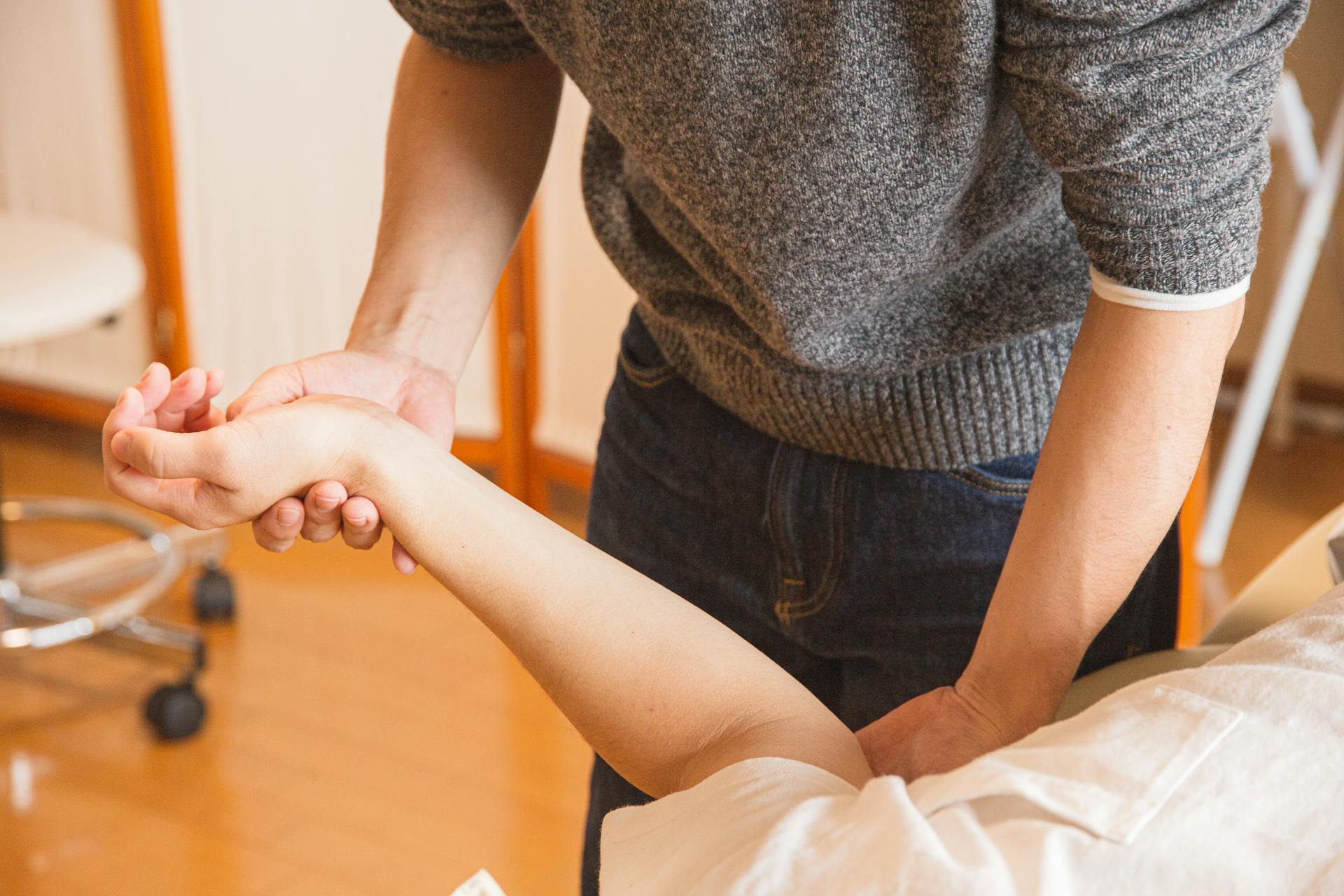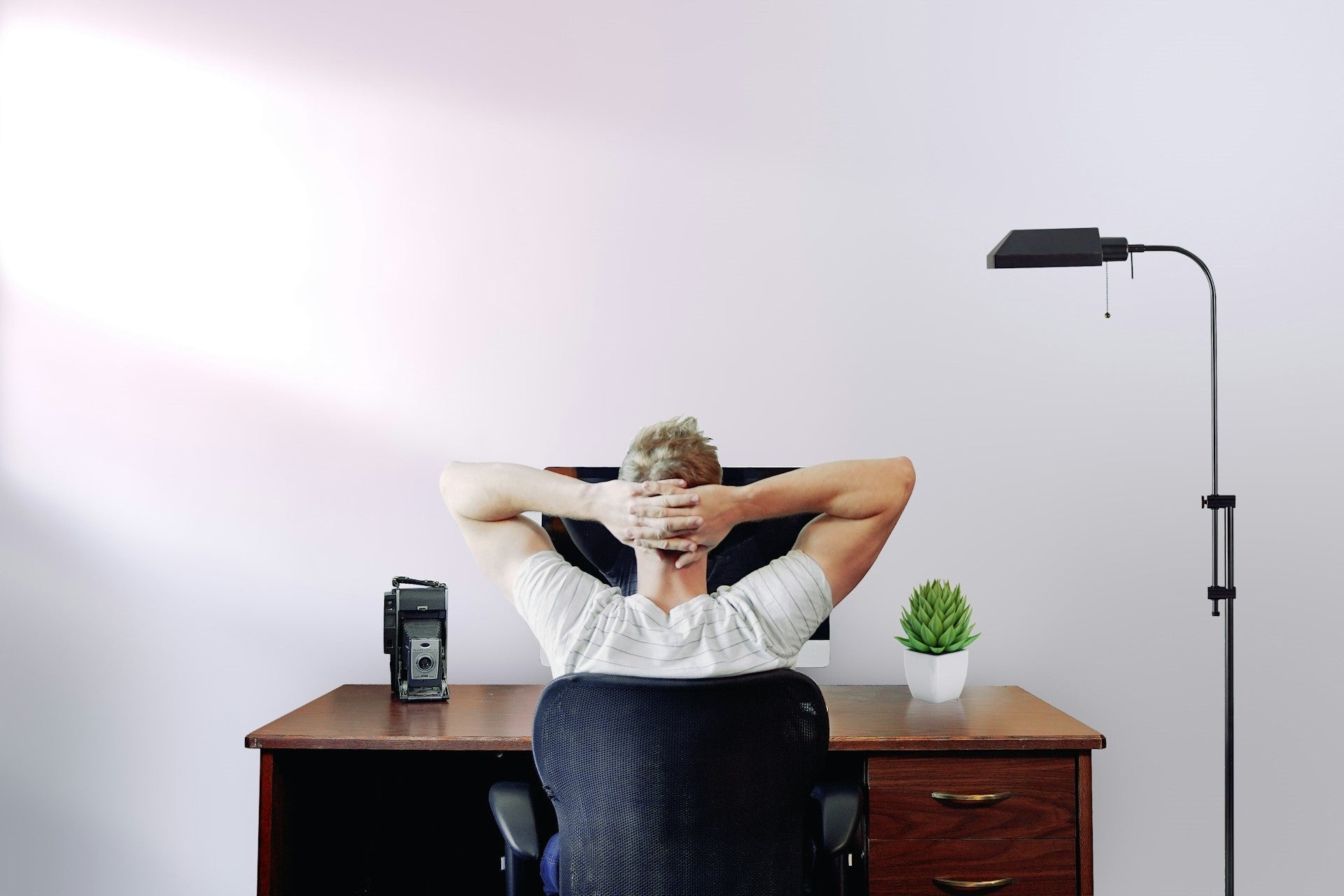If you’ve ever struggled with an achy case of tennis elbow, you’re not alone. As the single most common cause of elbow pain, the Cleveland Clinic estimates that up to 3% of Americans deal with it every year. And depending on your lifestyle, your odds of getting it could be even greater.
Anyone who’s had this condition knows how painful and disruptive it can be. Thankfully, certain recovery methods — like a simple tennis elbow massage — can ease pain and improve comfort as you heal.
Keep reading to learn how to self-massage for tennis elbow, including six helpful tips to maximize your relief.
What Exactly Is Tennis Elbow?
Tennis elbow is the more popular name for lateral epicondylitis, a condition associated with pain in the tendons and muscles of the upper forearm. These flex your palm backward and are engaged in many daily activities — whether you’re swinging a racket, typing on a keyboard, or doing just about anything else involving wrist movement.
With tennis elbow, inflammation around your extensor carpi radialis brevis (ECRB) is usually to blame. This muscle is near a large tendon known as the common extensor tendon, which connects to your humerus (upper arm) bone. And because this area is involved in so many movements, it can be susceptible to damage and inflammation from overuse.
Who Gets Tennis Elbow?
As the name implies, people who play racket sports like badminton or tennis are at a higher risk of tennis elbow. But it can also affect those who play baseball, racquetball, golf, and various other sports.
In addition, this painful condition often occurs in people between 30 and 50 — and it doesn’t only happen to gym-goers and athletes. Tennis elbow commonly impacts people with specific jobs and hobbies, such as:
- Carpenters or construction workers
- Painters
- Cooks or chefs
- Plumbers
- Butchers
- Musicians
How to Know if You Have Tennis Elbow
If you have what seems like tennis elbow but aren’t sure how to tell, there are a few key signs to look for.
As a first step, try flexing your hand backward slowly to engage your arm muscles. In motions like these, tennis elbow often causes discomfort in the upper forearm. Next, you can check the bony outer bump on your elbow for pain. This is known as the lateral epicondyle, and swelling or tenderness here can also be a symptom.
Finally, the best way to identify tennis elbow is to work with your doctor. They may walk you through an exam known as the Mill’s test, which looks something like this:
- Your doctor will use their fingers to put pressure on your lateral epicondyle.
- They will then push your hand downwards as they straighten your elbow.
- As they conduct the exam, they will ask about your pain level and where you feel it most. This information will help them determine whether or not you have tennis elbow.
Common Treatments
If your doctor diagnoses you with lateral epicondylitis, they may recommend a mix of treatments to get you on track to healing. Some common options include:
- Resting and avoiding any activities that irritate your elbow. This gives your body the vital time it needs to start the recovery process.
- Over-the-counter pain relievers to help manage pain.
- Using a brace to support the structures around your injury.
- Physical therapy to strengthen the lateral elbow and improve mobility.
- Corticosteroids to help ease your pain and inflammation.
How Can Massage Help Tennis Elbow?
Everyone knows that massage is one of the best ways to relax and de-stress. But beyond that, it can also mitigate certain aches and pains. In the case of tennis elbow, it may:
- Relax the muscles, which can decrease tension and pain around your sore elbow.
- Boost healthy circulation. Stimulating the muscles through massage can support healthy blood flow to areas that need it most.
- Reduce sensations of pain. Many people find that massage — especially friction massage — helps to relieve discomfort from overuse injuries like tennis elbow.
- Promote better mobility. With less muscle tension and pain, you may find it easier to move your arm more freely.
6 Self-Massage Tips for Tennis Elbow Relief

Lateral elbow pain can last anywhere from a few months to two years — which can be a long time to deal with discomfort. Fortunately, tools like self-massage can provide some relief along the way.
Here’s how to try self-massage for tennis elbow, including the best techniques and tips to go about it safely.
Note: While these tips can bring in-the-moment relief, they aren’t a substitute for personal medical advice. Be sure to check with your doctor for the best ways to treat or cure tennis elbow.
1. Start with Light, Circular Motions
When trying self-massage, it’s best to start with light, broad pressure. This helps to “warm up” your muscles and prepare them for deeper, more focused massage. It also enables you to get a sense of how much pressure feels good to you.
To get started, here’s a quick routine to warm up your arm muscles:
- Gently extend your affected arm and rest it on a surface. This could be a desk, kitchen table, or even a pillow on your lap.
- Use your opposite hand to lightly squeeze the muscles above and below the elbow. Continue to knead these muscles for a minute or so.
- Then, use your fingers to rub the muscles in light, circular motions.
- Repeat for a total of 2 to 3 minutes.
2. Use Friction Massage to Focus on Specific Pain Points
Beyond gentle massage, you can also try cross friction massage to target specific pain points. Physical therapists often use this technique to increase healing in sore and damaged tendons. And because it’s so simple (and doesn’t require any tools), it’s easy to use at home or on the go.
Here’s how to get started:
- Sit on a chair or at the end of a bed. Place a pillow on your lap and rest your sore elbow on top of it.
- Use your fingers to gently feel around the elbow until you reach a tender pain point.
- Once you identify a pain point, cross your pointer finger underneath your middle finger. Use these to rub the pain point from side to side with light-to-medium pressure.
- After 30 seconds to one minute, any tenderness should start to fade away. (Note: If your pain doesn’t begin to subside after a minute or so, it may be too early to massage. In this case, it’s best to give your elbow a few more days to heal.)
- Use this method for 2 to 6 minutes, up to three times daily.
3. Use a Massage Gun to Work Your Extensor Muscles
In the athletic world, massage guns are well-loved for easing pain and boosting recovery. These tools use the power of percussive therapy to deliver fast-paced bursts of massage to sore, achy muscles.
They’re also perfect for massaging the extensor muscles, which can be a painful hotspot for those with tennis elbow. If you’ve got a massage gun on hand, here’s a simple routine to try:
- Sit in a comfortable area with a pillow resting on your lap. Place your affected elbow on the pillow.
- Using a small massage gun with a soft, round attachment, turn it on to its lowest setting.
- At an angle, run the massage gun across the extensor muscles below the elbow for 10 to 20 seconds.
- Increase the pressure to your desired setting.
- Gradually make your way up towards the elbow, along the extensor muscles. This should feel soothing and relaxing, so be sure to move away from areas that feel distinctly painful.
- Spend up to two minutes massaging. After this time, your pain and tension should begin to subside.
4. Try Hand-On Myofascial Release
When it comes to self-massage for tennis elbow, one great option is hands-on myofascial release. This involves using your hands to grip, squeeze, and roll muscles and other soft tissue. And the benefits are no joke — it can help you boost healthy blood flow, relieve stiffness, and even ease some pain.
It works by relieving tension in the fascia, the tough connective tissue that encases your muscles.
For elbow pain relief, give this simple myofascial massage a try:
- Rest your elbow on a table or pillow, in any way that feels comfortable to you.
- Start by lightly kneading the muscles above, along, and below your painful elbow for a minute or so. Optionally, you can also use massage oil or lotion to decrease friction.
- Then, curl your fingers and thumb in a “C” shape to massage the extensor muscles in a linear motion. Start below your pain point and slowly massage downward with moderate pressure.
- Continue for 2 to 3 minutes.
- Finish by using your knuckles to massage the forearm muscles in a linear motion.
- Repeat these steps for up to ten minutes, or until you feel relief.
5. Try a Lacrosse Ball
Self-massage for tennis elbow doesn’t need to be complicated. To keep things simple, you can give yourself a thorough massage with a simple lacrosse ball. (Hint: If you don’t have one on hand, a tennis ball, golf ball, or standard massage ball will also work well.)
These small but powerful tools are great for breaking up tension and trigger points while improving mobility. To use one for lateral elbow pain, here are the steps:
- Rest your arm on a desk or table with your elbow slightly bent.
- Start by rolling your massage ball along the forearm muscles, from the elbow towards the wrist. Use moderate pressure to massage for 1 to 2 minutes.
- For a deeper massage, you can fully extend your arm while rolling. Sometimes, stretching your arm can help you find— and knead out — hidden trigger points.
- Roll for a total of five minutes, once or twice per day.
6. Be Mindful of Your Pain Level During Self-Massage
As a final tip, it’s essential to be mindful of your body’s signals during any massage. Of course, a little discomfort is normal — especially when your goal is to soothe the tension around overused, tired muscles. However, pain isn’t necessary for a good massage, and the last thing you’ll want to do is exacerbate your symptoms.
With this in mind, don’t hesitate to dial things back if your elbow feels too tender to work on. In the meantime, you can focus on other remedies or treatments your doctor recommends.
Addition Tips for Tennis Elbow Healing and Prevention
While self-massage for tennis elbow is helpful, it’s only one of many recovery methods that can offer relief. Here are some additional steps you can take to strengthen and protect your elbow for the long haul:
Talk with Your Doctor
First thing first, it’s best to consult your doctor about your arm and elbow pain. They can help accelerate your healing by getting you on the proper treatment plan. They can also point you in the direction of other health professionals who can improve your recovery, such as physical therapists or medical massage therapists.
Be Mindful About Physical Activity
If specific repetitive stress — such as swinging a racket, using a hammer, typing, etc. — is what caused your tennis elbow, then it can help to take a more mindful approach to these activities in the future.
As you recover, here are a few ways to take some stress off your elbow and forearm:
- Practice a warm-up routine before exercising or playing sports.
- Focus on proper form during physical activity — whether you’re in the gym, at work, or on the tennis court.
- Give your arm adequate time to rest.
- If possible, talk with your manager about switching activities during the day to avoid repetitive stress at work.
- Invest in lighter sports equipment, such as a new tennis or badminton racket.
Talk to a Physical Therapist About Strengthening Exercises
Another helpful tip to reduce tennis elbow pain is to work with a physical therapist. They can put together a workout plan to strengthen your forearm muscles and tendons. And not only can this speed up your recovery, but it can also help you prevent pain in the future.
Some at-home exercises to try include:
Fist Clench
The fist clench helps to engage the extensor muscles without overwhelming them. And because it’s such a light exercise, it’s a great option when you’re in the early stages of building strength at home.
To do it, simply:
- Rest your forearm on a table with your palm facing up.
- Clench your hand into a fist to engage the extensor muscles.
- Repeat for ten reps, up to a few times per day.
Wrist Extension With Dumbbell
If you’re ready to challenge your extensor muscles a step further, try a simple wrist extension with a dumbbell.
To get started, grab a small dumbbell — around two pounds will work well for most people, since you’ll want this exercise to be relatively gentle. Then:
- Have a seat on a chair or couch.
- With the dumbbell in hand, lean forward and rest your affected elbow on your knee. Your palm (and the dumbbell) should be facing down towards the floor.
- Extend your wrist by bringing the dumbbell up towards your body. As your wrist bends back, you should feel your forearm muscles engage.
- Repeat ten times for 2 to 3 sets.
Try Sports Massage
If you live an active lifestyle, you may wonder whether or not it’s worth heading to a spa for a comprehensive massage. And in some cases, it certainly can be.
When you talk to your masseuse about having tennis elbow, they may recommend trying sports massage. This modality aims to relieve specific problem areas through:
- Stretching
- Trigger point therapy
- Various massage techniques and pressures to target specific pain points
Together, these techniques can ease tension, boost mobility, and support your recovery as a whole.
The Takeaway
While tennis elbow can be a pain, the good news is that most people will fully recover with proper TLC and rest. Along the way, you can use home remedies to improve your comfort — whether that’s OTC medication, heat and cold therapy, or a good massage.
Before jumping into a new massage or exercise routine, be sure to check with your doctor to ensure it’s safe for you. With their green light and guidance, you can use these natural tools to build strength, reduce discomfort, and soothe pain on your own terms.
To get started with home massage, explore MedMassager’s line of restorative massage tools or learn more about their many uses today.



